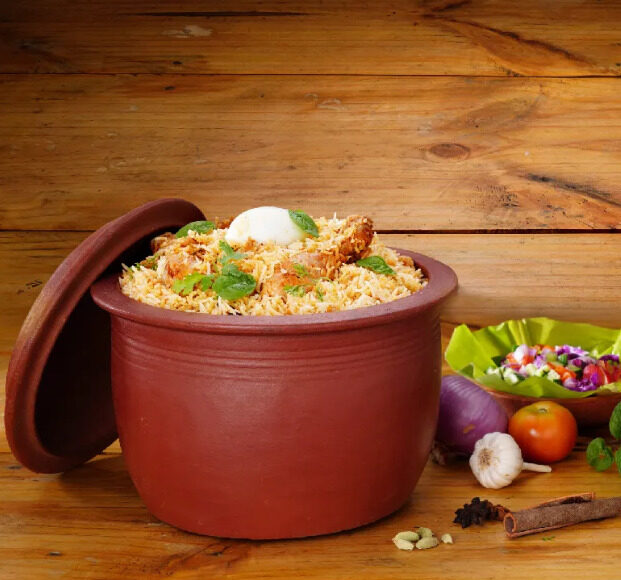Mud Pot for cooking are truly lovely in the kitchen — they are beautiful and, most importantly, amazing to use. But these pots require some simple care and attention to use them over the long term without damaging them or losing their good looks. This article explains how you can use an Earthen Pot for Cooking and make it last forever.
How to maintain Clay cookware?
1. Start by soaking your clay pot in water for 30 minutes.
Before using your pot for the first time, it must be soaked in water for at least 30 minutes. This will help prevent cracking or warping during the first use. If you don’t want your pot drying out too quickly after washing, we suggest soaking it overnight before washing as well as drying it immediately after washing.
2. Never use harsh soap to clean your cookware.
Clay is a porous material, which means it absorbs liquids and particles from the food you cook in it. Soap will remove the natural oils that keep your clay pot protected from rusting. If you must use a special cleaner for your cookware, check the label for instructions on how to safely clean your cookware with it.
3. Allow your clay pots and pans to completely dry before storing them away.
If you’re using clay cookware, you should know that it’s important to let your pots and pans completely dry before storing them away.
This is because moisture can cause cracks in the clay and lead to leaks. If there are cracks in your pot, it could cause food to get caught there, making it harder for you to clean your ware later on.
4. Always store your pots and pans in a dry place.
Clay cookware is porous, which means that it will absorb moisture from the air over time. This can cause damage to the pot or pan, as well as make it more difficult to clean. If you store your clay pots and pans in a dry place, they will be less likely to crack or break, and they will also be easier to clean.
5. Avoid scratching your clay pot with sharp implements.
The best way to avoid scratching your clay pot is to avoid using sharp implements.
Clay pots are delicate and need to be handled with care. Sharp utensils, such as knives, can scratch the pot’s surface, causing it to chip and break. You can use wooden or plastic spoons for stirring and serving food in your clay pot.
6. Use a wood or bamboo spoon.
Using a wood or bamboo spoon when cooking with clay cookware is important.
Metal spoons can scratch the inside of your pot, which can cause it to break down over time. This will also make cleaning the pot harder, which is why we recommend using a wooden spoon.
Wooden spoons are great because they’re soft enough to not scratch your cookware but hard enough that you can still get a good grip on them.
7. Treat cracks and chips carefully.
Clay cookware is beautiful, but it’s also fragile. Treat cracks and chips carefully to keep your clay pots and pans in top shape.
A cracked pot or pan can be repaired with a simple patch made from vegetable oil or lard. Rub the oil or lard over the damaged area until it is smooth, then place a small piece of clean clay over the repair. Press firmly until the clay spreads out evenly over the entire pot or pan surface. Let it dry for 24 hours before using it again.
If your pot or pan has developed a crack that doesn’t go all the way through, try using a doughnut-shaped piece of clay to fill in around it so that no food gets stuck inside while cooking (this is called “coring”). You can also use coring to create a new handle for your pot or pan if one breaks off while cooking (just ensure both pieces are dry before reattaching).
8. Season clay pots regularly.
Season clay pots regularly to prevent rusting. When you season your pot, you’re creating a layer of oil on the inside of the pot that prevents it from rusting.
The seasoning process is simple:
1. Simply wash out the pot and dry it completely, then rub a bit of oil on the inside of the pot using a paper towel.
2. Heat up a small amount of oil and pour it into the pot.
3. Allow it to sit for about an hour before reheating it again.
4. Repeat this process several times, allowing your pot to cool down between each heating session.
Once you’ve seasoned your pot, never use soap on it or leave it soaking in water for long periods of time. This can strip away the oil that makes it nonstick!
Conclusion:
Caring for clay cookware is very important in order to keep it in good condition.
It’s been said that clay cookware takes a little getting used to, and it’s true. You’ll have to put in a little work to unlock the potentially life-changing benefits. But if you’re looking for a new way to cook that’s healthier, more sustainable, and cheaper than other options out there, give clay cookware a chance. You might just be surprised at what it can do.













